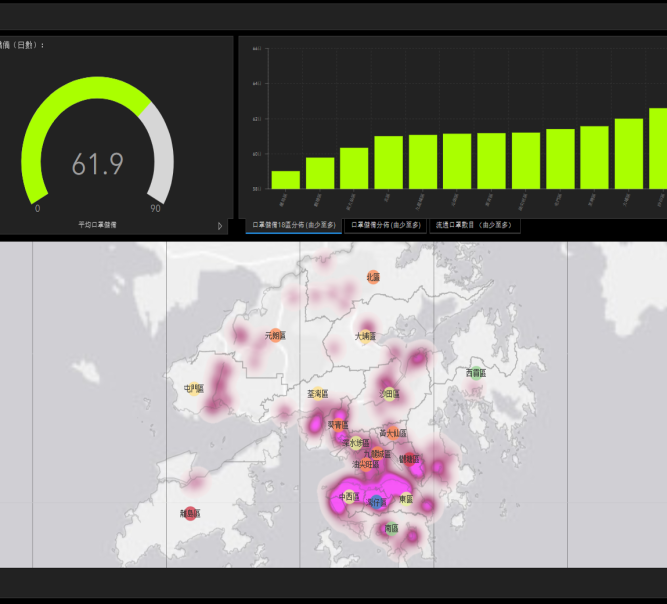Prof Paulina Wong applies GIS to monitor face mask stocks and panic levels

Geographic Information Systems (GIS) and big data technologies have been crucial in containing COVID-19 in many aspects, from using the visualization of epidemic information and spatial tracking of confirmed cases, to predictions of regional transmission.
This can go further than medical applications to achieve an immediate social impact, as proven by Prof Paulina Wong, Assistant Professor of Lingnan University’s Science Unit.
Six days after the first COVID-19 case in Hong Kong in January 2020, Prof Wong and the Hong Kong Public Opinion Research Institute (HKPORI) launched a web-based GIS dashboard for the public, showing not only near real-time COVID-19 information and public health risk in local communities, but also citizens’ stress levels and where there were the most urgent demands for anti-epidemic commodities.
Using data from HKPORI’s online survey covering time-sensitive questions such as “How would you rate your chance of being infected by COVID-19 this month?” and concerning the use and stock levels of face masks, the regularly updated dashboard is proving very useful for decision makers, District Council members, NGOs and social workers to target high-risk and deprived areas and offer immediate attention and support to local residents, in particular the elderly and the needy.
“The project is supported by social enterprises and donors, as it enables them to make informed decisions and immediately channel face masks and other items in demand to those in real need,” Prof Wong explained, adding that donors like it as they can keep track of supplies and know exactly where they are going.
In mid-March, the project was extended to volunteers and social enterprises so as to include and engage people with limited internet access and those without a smartphone by means of personal solicitation and assistance in completing the online survey questions.
The project and mapping also provide indications up to a macro level of how public opinion and sentiment sway in certain circumstances. “In March, when the overseas students started returning to Hong Kong and Wuhan reopened its borders, there were dynamic changes in face mask stocks and panic levels,” Prof Wong said.
The findings show that the average mask reserve of respondents was as low as 17.6 days in the first week of the outbreak, with 5 per cent of respondents indicating they had no reserve at all. This reserve had increased to 51 days by early March (week 5 of the outbreak), and was up to 58.6 days by early April (week 9 of the outbreak). The most needed anti-epidemic commodities other than face masks were hand sanitizer (23.7 per cent) and ethyl alcohol (23.1 per cent) as of 2 March.
While the project is similar to Prof Wong’s “Fine particulate matter pollution from incense burning at temples in Hong Kong” and others concerning public health, wellbeing and social policy with GIS, the project is special as “it really helps people in near real time, and the impact is immediate and measurable. And the collaborative efforts of all parties involved in the project are encouraging and inspiring. I hope these on-going initiatives continue to generate positive social impact to local communities of Hong Kong.”

